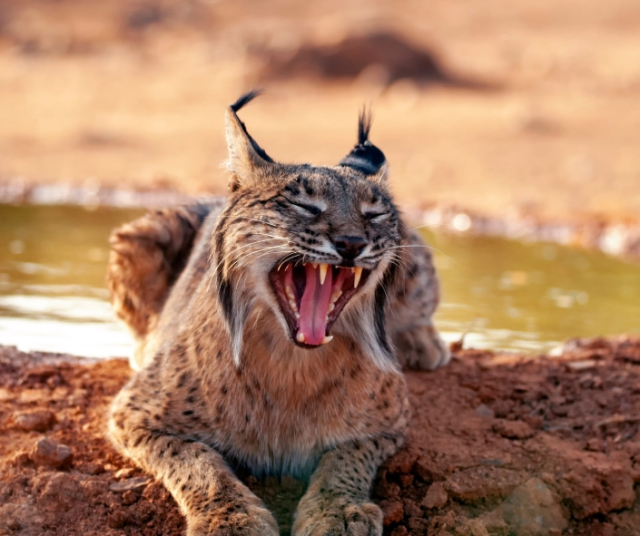Spain, with its rich biological and cultural diversity, has chosen the Iberian lynx (Lynx pardinus) as its national animal. This majestic feline, once on the brink of extinction, now represents the perseverance and success of conservation efforts in the country.
History and Decline of the Iberian Lynx: A Challenging Journey
The history of the Iberian lynx in the Iberian Peninsula is a chronicle that spans centuries of coexistence with the biological wealth of the region, but also includes decades of challenges that brought this majestic feline to the brink of extinction. From its ancestral presence in Mediterranean ecosystems to its dramatic decline in the 20th century, the Iberian lynx has experienced a challenging journey that reflects both the complexity of human interaction with nature and the resilience of a species in the face of adversity.
This feline, known for its elegant spotted coat and penetrating gaze, has been an integral part of the Iberian fauna for centuries. Its presence in forests and natural habitats has left a mark on local history and culture, being the subject of myths and legends that highlight its importance in the identity of the region.
However, as the 20th century progressed, the Iberian lynx found itself caught in a whirlwind of threats that endangered its existence. Human expansion and the resulting loss of habitat represented a significant blow to the lynx, which saw its hunting and breeding areas reduced. Unbridled urbanization and fragmentation of the natural landscape created insurmountable barriers for this feline, pushing it towards ever smaller and more isolated habitats.
Success of Conservation Programs
The Iberian lynx, affectionately known as "the Spanish tiger", has undergone an astonishing transformation in recent decades thanks to unprecedented conservation programs. This feline, once on the brink of extinction, now epitomizes the resilience and success of conservation efforts in Spain. In this detailed analysis, we will explore the evolution and achievements of Iberian lynx conservation programs, highlighting how these efforts have led to its rebirth and provided a hopeful outlook for the conservation of endangered species around the world.
The Initial Challenge: A Lynx on the Verge of Extinction
At the beginning of the 21st century, the situation of the Iberian lynx was grim. Human expansion, habitat loss, poaching and a shortage of prey had drastically reduced its population, bringing it to the brink of extinction. Alarming estimates indicated that only a few hundred individuals remained in the wild, and the International Union for Conservation of Nature (IUCN) classified the Iberian lynx as a critically endangered species.
This critical scenario generated a global wake-up call and catalyzed immediate action. Scientists, conservationists and governments came together to address the challenges facing the Iberian lynx, and thus began an intensive journey towards its recovery.
The Comprehensive Strategy: Captive Breeding and Controlled Release
One of the cornerstones of the conservation strategy was the implementation of captive breeding programs. These programs, developed in collaboration with zoos and wildlife experts, aimed to preserve genetic diversity and increase the lynx population before releasing them into the wild.
Captive breeding, although presenting challenges, became a vital tool. Lynxes born in captivity not only contributed to expanding the genetic base, but also provided an opportunity to closely study the behavior of these creatures under controlled conditions. This knowledge was crucial in preparing juvenile lynxes for the wild and improving their chances of survival.
The first controlled releases in selected areas, such as the Doñana National Park, marked exciting milestones. Captive-bred lynxes were cautiously reintegrated into restored natural habitats, signaling the start of the Iberian lynx's recovery in the wild.
Although the Iberian lynx has experienced a notable resurgence, it still faces significant challenges to its long-term survival. Habitat fragmentation due to urban expansion and roads represents an ongoing threat to the mobility of these cats. Furthermore, climate change and human pressure on natural resources pose additional challenges for the conservation of this species.
Continued collaboration between governments, scientists, conservationists and society as a whole is crucial to addressing these challenges. Public education about the importance of the Iberian lynx in ecosystem balance and the implementation of sustainable measures are essential to ensure its long-term survival.
